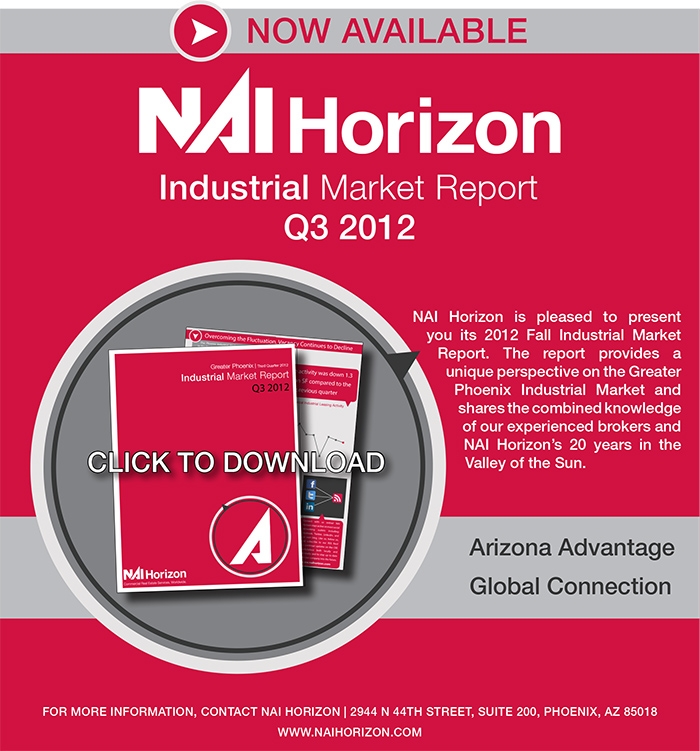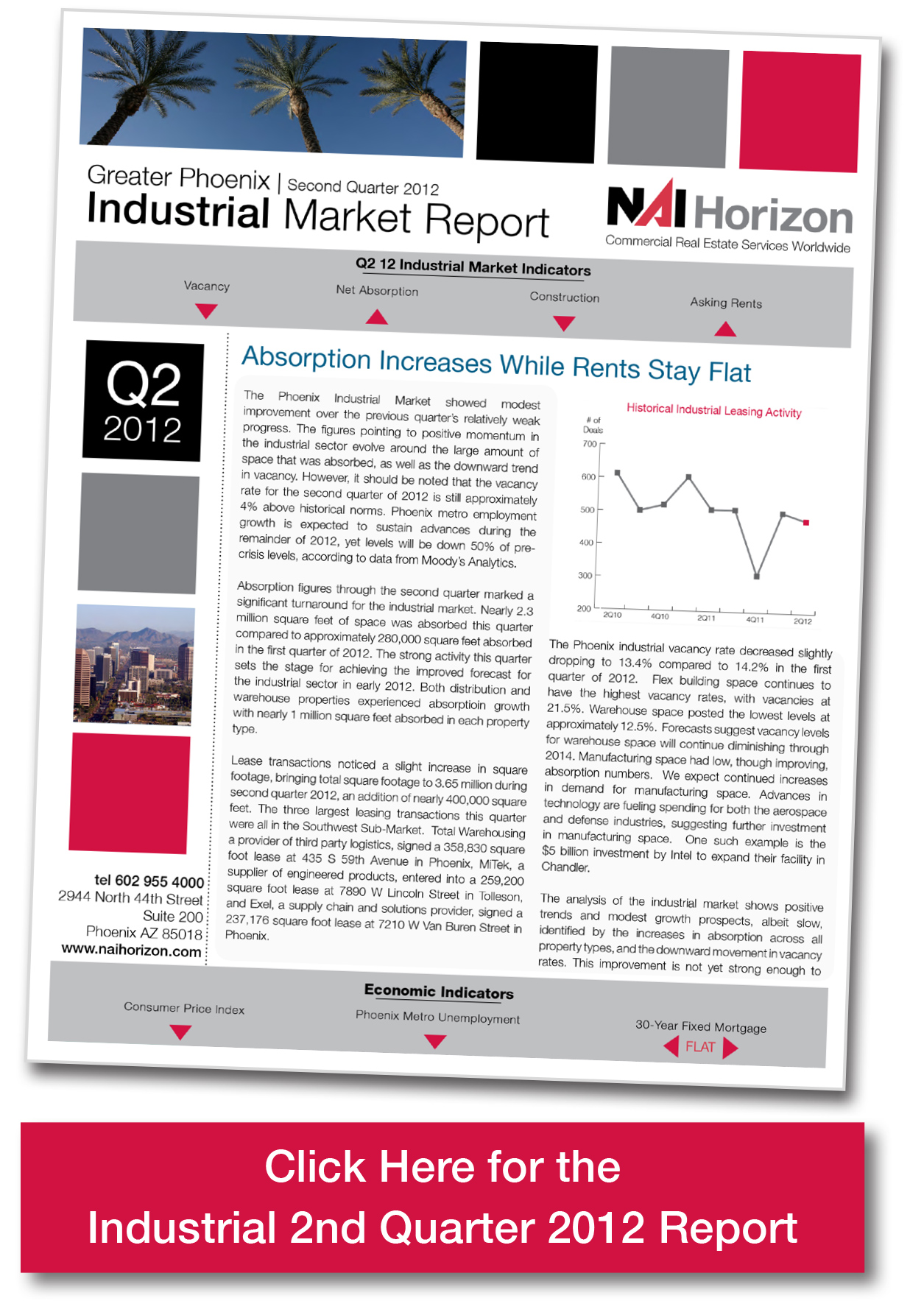The Phoenix Industrial Market transitioned into 2013 with positive indicators giving an outlook to a sustainable future. After two years of steady rebuilding of the market, not without its pitfalls, Q4 12 comes out solid with a strong positive net absorption, declining vacancy rates, and increased construction. With election year uncertainty behind us, the Phoenix CRE market has the chance to maintain this ground, brightening the mindset towards recovery from the lowest points of the recent recession. Metro Phoenix helped lead the way by adding the fifth-highest number of construction jobs in the nation, over 5,400 new construction jobs year-over-year as of November. Combined with the rapidly recovering housing market, it is only a matter of time for the positive momentum to impact the commercial market.
While 2012 began with a negative net absorption, the market quickly recovered from this stumble, which turned out to be the only negative net absorption posted in 11 months. The second quarter finished with close to 2.5 million SF of positive absorption. Continuing the trend at 1,956,473 SF absorbed, Q4 helped end 2012 on a positive note. While the 2012 year-end total of 4,994,590 SF was down over 1.5 million SF from the previous year, 2013 appears to continue the momentum of positive net absorption occurring during the last 2 years. Each of the five industrial submarket clusters posted positive absorption numbers, with the Southeast Valley headlining with over a 1 million SF absorbed.
In addition to the prolonged positive absorption run, vacancy continues its steady decline. With a similar vacancy rate not seen in the Phoenix industrial sector since midyear 2008, Q4 12 ended the year with a rate of 12.7%, a long way down from the 17% vacancy rates seen at the beginning of 2010. The Northwest Valley led the Phoenix market with the lowest vacancy rate of 11.8%, while the Sky Harbor submarket showed the highest rate at 13.4%.
Industrial building completions for Q4 12 added just over 2 million SF, more than doubling the delivered square footage for the previous three quarters of the year. The year-end total of 2,894,298 SF is an approximate 1.8 million SF increase of delivered space over 2011. One of the most notable deliveries for the year occurred in the final quarter of 2012; 3740 S Signal Butte Rd, a 1,328,075 SF facility that is now over 45% occupied. In addition to delivered space, future deliveries look positive with 15 industrial projects totaling 5,375,404 SF under construction during the final quarter.
While these indicators show signs of the industrial market resurgence, areas for improvement remain. Rental rates held at $0.51 PSF for the third straight quarter. While overall more submarkets reversing their downward trend in rental rates, the Phoenix market still has hurdles to overcome until these rates return to pre-recession levels. While vacancy and absorption seem to show stamina, the rental rates remain stagnant.
As economic conditions settle throughout 2013, optimistic economic trends viewed in 2012 could begin to trickle down and show their effect on the CRE market. The largest lease transaction recorded in Q4 12 was a 164,486 SF lease at 2550 N Nevada St in Chandler for the i/o Data Center. The largest sale transactions for the quarter were all a part of larger portfolio sales; 7980-7990 W Buckeye was part of a $178 million, 13 state, 20 property portfolio sale to the Chicago based real estate investment firm Brennan Investment Group, while both 4201 N 45th Ave and 2555 N Nevada St were part of a $76 million, 3 property sale leaseback sold by the Hensley Beverage Company to Angelo, Gordon & Co., a privately-held registered investment advisor.



